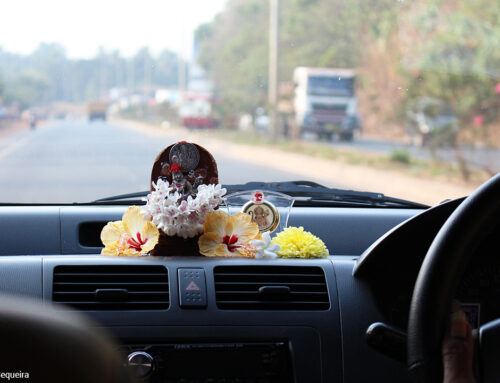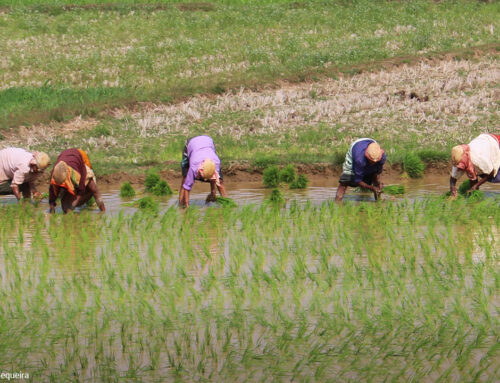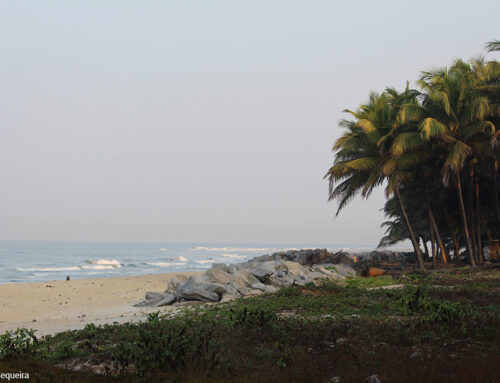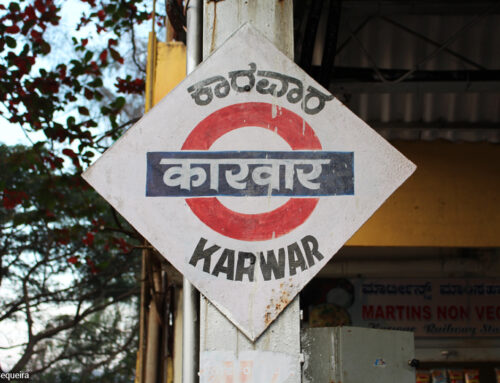I consider myself lucky to have grown up in Goa. Goa of the 60s and 70s, when this tiny state was a paradise for folks who came here to find themselves, but instead chose to lose themselves on the pristine beaches that offered complete privacy. Hippies, they called them. In droves they came, they smoked, they left us in peace – so we could enjoy the languid summer months on our beaches and hills.
As kids, we explored our land freely, breathing air that smelled of freshly cut paddy and fresh rain. Everything belonged to us. The open fields, the non-congested roads, the playgrounds, even the neighbours’ backyards, where we occasionally forayed for fruit. In the summer, the hills were ours to explore and discover. Green hills bursting with cashew and berries like ‘karvandas’, ‘bedsams’ and ‘chunnas’. Mango groves groaned under the weight of ripe, luscious mangoes, jackfruit trees were over-laden with fruit, and watermelon fields were bursting at the vine – all ours for the picking. There was just one unwritten rule we kids followed: Don’t get caught.
That was a time when Goa was quietly Goan, the comfortable silence broken only by the sound of us kids playing games that do not exist any longer: Seven tiles, gilli-dhanda, marbles, hide n seek. Some boys traded cashew nuts for marbles. Others played football, some fished in the culverts and creeks. Little girls played house-house. We all knew better than disturb the sleep of parents and grandparents who loved their siestas as much as they loved their seafood. Occasionally, the peace of the neighbourhood was disturbed by petty quarrels between neighbours, fighting about innocuous topics: Pigs, goats, coconut trees. All quarrels were swept under the coir mat when it came to weddings, births and funerals. Three crackers were lit to announce the arrival of a boy, two for a girl. Weddings were held in ‘matous’ – outdoor venues, covered with palm fronds. The whole village assembled and danced to ‘Johnson and his Jolly boys’, and ate wedding stew and pulau. Almost every adult male went home pickled in Goan Feni (local brew).
Everyday life in the villages was punctuated by the church bells that rang at 5 for the morning prayer, 6 pm for Angelus and 8 pm for the rosary. And Sunday belonged to God and God’s bounty; Pork Sorpotel, Beef Roulade, Chicken Xacuti, Prawn Cutlets, Potato Chops and Pau and Pulav. Life was predictably delicious.
There’s barely anything left of the Goa I knew. Now, Goa has become a retirement retreat for the rich from other parts of India. People have bought properties from ‘Bhatkars’ or landowners who have sold Goa’s soul to the cash-rich Delhiwallahs and foreigners. This is evident everywhere – one can hardly hear the sweet sound of Konkani in the markets and stores. North Goa is a town of Babel – A variety of south Indian languages are spoken, with a smattering of Hindi thrown in for good measure. Konkani is relegated to the homes of those who still dream in it.
What has improved tremendously however, is the choice of restaurants serving authentic Goan cuisine. There are innumerable places offering seafood thalis. Driving South from Vagator to the Ritz Classic, in the capital city of Panaji, the garbage piled on the roadsides was enough to take away our appetite. But enter the Ritz Classic, and the nostrils pick up familiar, comforting smells. Fish, coconut, kokam and curries. We ordered a fish thali, and while waiting for it to arrive, and to avoid the ostensible watering of my mouth, I focussed on a group of girls on the next table. Very young, very pretty, very animated. They looked excited to be eating out. I leaned conspiratorially across and asked with some impunity: Do your mothers know you’re eating out, today? What did you do with the lunches they packed for you? They laughed, and one of them replied: We’re doctors, doing our resident year at the Goa Medical College, and when we get a chance we come here to eat. And yes, our mothers are aware, she said with a glint in her eye. Yes, they assured us, the thali was well worth the wait.
The thali was excellent. Rice, fish ambotik (hot & sour curry), king fish fry, tisreo (small clams) sukhem, crab xacuti, prawn curry, kismoor made of dry shrimp and coconut, vegetables, creamy dessert and of course, the heavenly sol kadi. I let my eyes feast first, before I let my fingers do the walking through that gorgeous Goan thali of pure freshness The seafood was not just incredibly fresh, it was incredibly delicious, too! All conversation stopped between Alan and I. We ate in utter silence, relishing every morsel and paying homage to that tantalizing thali. Then, with the inimitable fragrance of fresh fish goodness on our fingers, we headed back to Vagator for a much-needed siesta.
Gazing at the Mandovi river, as it receded from my view, I pondered on my beautiful Goa that was, and what will become of it. The late Wendell Rodricks once said to me that those of us who had left its silver shores had no right to criticize. True.
But no one can stop me from talking of its golden past.
More of Goa in the next episode, when we visit Goa’s soothing south.
Stay tuned.
For photographs go to the Photo Gallery tab above; likewise for recipes.
Other places to visit in North Goa:
Beaches:
• Anjuna
• Arambol
• Calangute
• Mandrem
• Miramar
• Querim
• Sinquierim
• Sridao
• Vagator
• Dona Paula
Forts:
• Aguada
• Chapora
• Reis Magos
Markets:
• Mapusa Friday Market
• Anjuna Flea Market
Churches:
• Mae de Deus, Saligao
• Our Lady of Immaculate Conception, Panaji
• Bom Jesu Basilica, Old Goa
• Se Cathedral, Old Goa
Museums:
• MOG – Museum of Goa, Pilerne
• Goa State Museum, Panaji
Best time to visit: November – March
Know your Konkan Coast

The Konkan coast runs south from Mumbai all the way to Kasargod. Quaint fishing villages and magnificent forts look out into the endless blue of the Arabian sea. Pristine beaches and coconut palm trees dot the coast all along, until you reach Malvan, the last beach town of significance, before the sands dissolve into Goa. The cuisine along the Konkan coast is as varied as it is delicious, greatly influenced by its geographic location, and layered history of the region. They are all intertwined yet distinct. Some patterns are common – like the seasons which influenced bottling pickles, and drying of fish and pork etc. The monsoon brought a lot of seasonal foods like bamboo, snails (conge) etc to the table. Coconut is an integral part of the Konkan cuisine. Apart from local influences, Portuguese and Arab influences had major impacts.









Such an interesting read. It’s like nearly being there. Milena it’s always a pleasure to read your articles. A gifted writer!